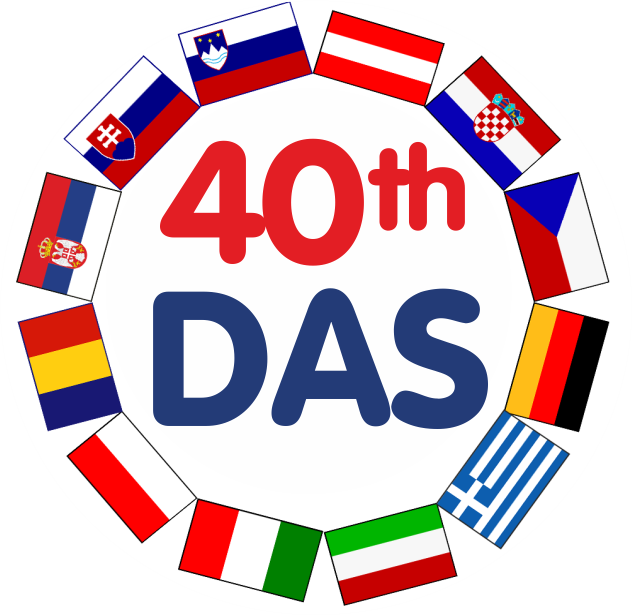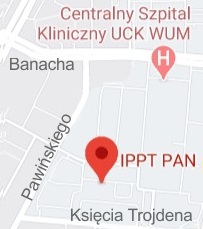| 1. |
Sabaie H.♦, Mazaheri Moghaddam M.♦, Mazaheri Moghaddam M.♦, Amirinejad N.♦, Asadi M. R.♦, Daneshmandpour Y.♦, Hussen B. M.♦, Taheri M.♦, Rezazadeh M.♦, Long non-coding RNA-associated competing endogenous RNA axes in the olfactory epithelium in schizophrenia: a bioinformatics analysis,
Scientific Reports, ISSN: 2045-2322, DOI: 10.1038/s41598-021-04326-0, Vol.11, pp.24497-1-9, 2021 Streszczenie:
The etiology of schizophrenia (SCZ), as a serious mental illness, is unknown. The significance of genetics in SCZ pathophysiology is yet unknown, and newly identified mechanisms involved in the regulation of gene transcription may be helpful in determining how these changes affect SCZ development and progression. In the current work, we used a bioinformatics approach to describe the role of long non-coding RNA (lncRNA)-associated competing endogenous RNAs (ceRNAs) in the olfactory epithelium (OE) samples in order to better understand the molecular regulatory processes implicated in SCZ disorders in living individuals. The Gene Expression Omnibus database was used to obtain the OE microarray dataset (GSE73129) from SCZ sufferers and control subjects, which contained information about both lncRNAs and mRNAs. The limma package of R software was used to identify the differentially expressed lncRNAs (DElncRNAs) and mRNAs (DEmRNAs). RNA interaction pairs were discovered using the Human MicroRNA Disease Database, DIANA-LncBase, and miRTarBase databases. In this study, the Pearson correlation coefficient was utilized to find positive correlations between DEmRNAs and DElncRNAs in the ceRNA network. Eventually, lncRNA-associated ceRNA axes were developed based on co-expression relations and DElncRNA-miRNA-DEmRNA interactions. This work found six potential DElncRNA-miRNA-DEmRNA loops in SCZ pathogenesis, including, SNTG2-AS1/hsa-miR-7-5p/SLC7A5, FLG-AS1/hsa-miR-34a-5p/FOSL1, LINC00960/hsa-miR-34a-5p/FOSL1, AQP4-AS1/hsa-miR-335-5p/FMN2, SOX2-OT/hsa-miR-24-3p/NOS3, and CASC2/hsa-miR-24-3p/NOS3. According to the findings, ceRNAs in OE might be promising research targets for studying SCZ molecular mechanisms. This could be a great opportunity to examine different aspects of neurodevelopment that may have been hampered early in SCZ patients. Afiliacje autorów:
| Sabaie H. | - | inna afiliacja | | Mazaheri Moghaddam M. | - | inna afiliacja | | Mazaheri Moghaddam M. | - | inna afiliacja | | Amirinejad N. | - | inna afiliacja | | Asadi M. R. | - | inna afiliacja | | Daneshmandpour Y. | - | inna afiliacja | | Hussen B. M. | - | inna afiliacja | | Taheri M. | - | inna afiliacja | | Rezazadeh M. | - | inna afiliacja |
|  | 140p. |
| 2. |
Sabaie H.♦, Salkhordeh Z.♦, Asadi M. R.♦, Ghafouri-Fard S.♦, Amirinejad N.♦, Behzadi M. A.♦, Bashdar M. H.♦, Taheri M.♦, Rezazadeh M.♦, Long Non-Coding RNA- Associated Competing Endogenous RNA Axes in T-Cells in Multiple Sclerosis,
Frontiers in Immunology, ISSN: 1664-3224, DOI: 10.3389/fimmu.2021.770679 , Vol.12, pp.770679-1-8, 2021 Streszczenie:
Multiple sclerosis (MS) is an immune-mediated demyelinating and degenerative disease with unknown etiology. Inappropriate response of T-cells to myelin antigens has an essential role in the pathophysiology of MS. The clinical and pathophysiological complications of MS necessitate identification of potential molecular targets to understand the pathogenic events of MS. Since the functions and regulatory mechanisms of long non-coding RNAs (lncRNAs) acting as competing endogenous RNAs (ceRNAs) in MS are yet uncertain, we conducted a bioinformatics analysis to explain the lncRNA-associated ceRNA axes to clarify molecular regulatory mechanisms involved in T-cells responses in MS. Two microarray datasets of peripheral blood T-cell from subjects with relapsing-remitting MS and matched controls containing data about miRNAs (GSE43590), mRNAs and lncRNAs (GSE43591) were downloaded from the Gene Expression Omnibus database. Differentially expressed miRNAs (DEmiRNAs), mRNAs (DEmRNAs), and lncRNAs (DElncRNAs) were identified by the limma package of the R software. Protein-protein interaction (PPI) network and module were developed using the Search Tool for the Retrieval of Interacting Genes/Proteins (STRING) and the Molecular Complex Detection (MCODE) Cytoscape plugin, respectively. Using DIANA-LncBase and miRTarBase, the lncRNA-associated ceRNA axes was constructed. We conducted a Pearson correlation analysis and selected the positive correlations among the lncRNAs and mRNAs in the ceRNA axes. Lastly, DEmRNAs pathway enrichment was conducted by the Enrichr tool. A ceRNA regulatory relationship among Small nucleolar RNA host gene 1 (SNHG1), hsa-miR-197-3p, YOD1 deubiquitinase (YOD1) and zinc finger protein 101 (ZNF101) and downstream connected genes was identified. Pathway enrichment analysis showed that DEmRNAs were enriched in “Protein processing in endoplasmic reticulum” and “Herpes simplex virus 1 infection” pathways. To our knowledge, this would be the first report of a possible role of SNHG1/hsa-miR-197-3p/YOD1/ZNF101 axes in the pathogenesis of MS. This research remarks on the significance of ceRNAs and prepares new perceptions for discovering the molecular mechanism of MS. Słowa kluczowe:
bioinformatics analysis,competing endogenous RNA,long non-coding RNA,microarray,multiple sclerosis Afiliacje autorów:
| Sabaie H. | - | inna afiliacja | | Salkhordeh Z. | - | inna afiliacja | | Asadi M. R. | - | inna afiliacja | | Ghafouri-Fard S. | - | inna afiliacja | | Amirinejad N. | - | inna afiliacja | | Behzadi M. A. | - | inna afiliacja | | Bashdar M. H. | - | inna afiliacja | | Taheri M. | - | inna afiliacja | | Rezazadeh M. | - | inna afiliacja |
|  |





















